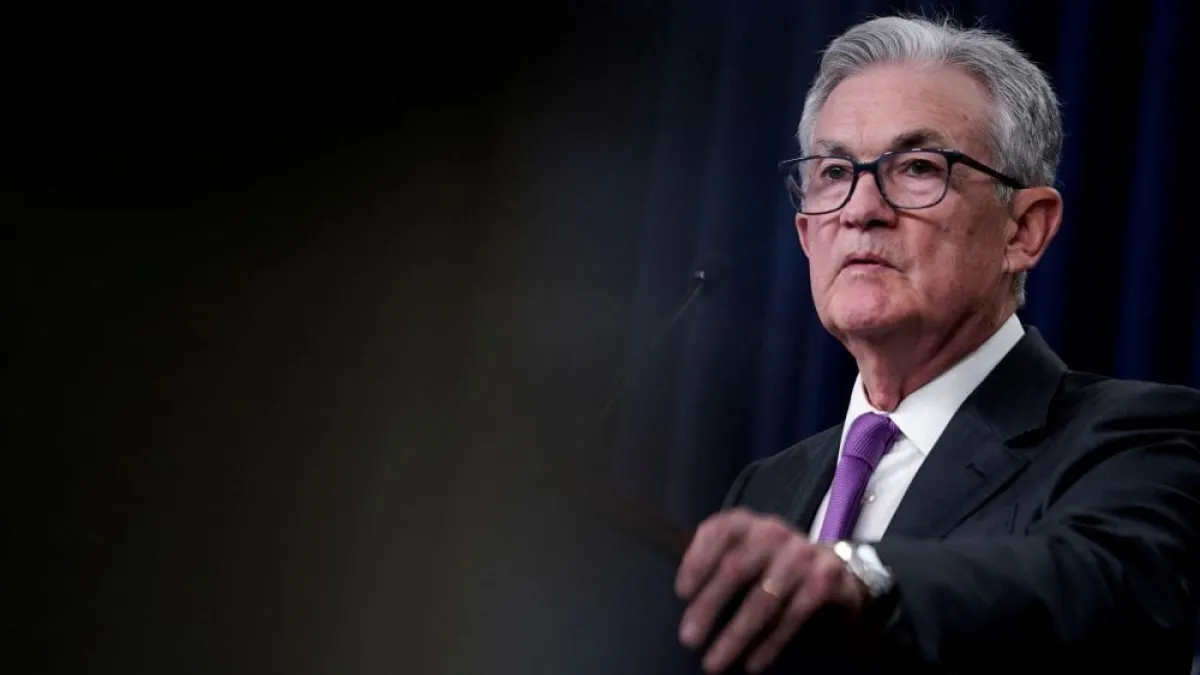
Concerned about growing risks in the labor market, Federal Reserve Chair Jerome Powell on Friday opened the door a bit wider to the first interest rate cut of the year.
“The balance of risks appears to be shifting,” Powell said in a closely watched speech at the annual meeting of central bankers in Jackson Hole, Wyoming. The labor market is still roughly in balance, Powell said, but it is a “curious kind of balance that results from a marked slowing in both the supply of and demand for workers.” Overall, the threat of a decline in the labor market marked by higher layoffs and unemployment is growing.
At the same time, economic growth is slowing, and the effects of the tariffs imposed by President Donald Trump on consumer prices are becoming clear. “We expect those effects to accumulate over coming months, with high uncertainty about timing and amounts,” Powell said. The Fed’s base case is that price hikes will be relatively short-lived, a one-time hit to the economy, but there’s also a chance that the tariffs could spur longer-lasting inflation.
“In the near term, risks to inflation are tilted to the upside, and risks to employment to the downside—a challenging situation,” Powell said. Weighing the risk factors together, he concluded that current conditions “may warrant adjusting our policy stance.” However, nothing is certain at this point, and Fed officials will continue to review new data as it rolls in.
Although Powell fell short of committing to a rate cut next month, most analysts concluded that the odds of a cut had increased significantly. Investors, many of whom have been calling for a rate cut, sent stocks sharply higher, with the Dow Jones Industrial Average jumping nearly 1.9% and the S&P 500 climbing 1.5%. Treasury rates dropped, with the 10-year falling seven basis points, and the odds of a rate cut in September jumped to 84% in the CME Group’s FedWatch Tool, which measures market sentiment.
The rate-setting Federal Open Market Committee is scheduled to hold its next meeting on September 16-17.
Trump pressure: Using a mix of threats and insults, Trump has been pressuring the Fed chief to lower interest rates. Following Powell’s speech, Trump told reporters that he should have lowered rates months ago. “We call him ‘Too Late’ for a reason,” he said.
Powell did not address Trump’s comments on Friday.
What the experts are saying: Analysts widely agreed that Powell’s comments translate to a high probability of a rate cut next month.
J.P. Morgan’s Michael Feroli wrote in a research note that “Powell’s Jackson Hole remarks confirmed market and consensus expectations for the FOMC to cut the funds rate at its next meeting in mid-September.” Feroli’s team expects to see a 25-basis point cut, with three more later in the year.
Market strategist Peter Boockvar said he, too, is convinced that the Fed will cut rates at its next meeting. “Bottom line, today’s speech could not be more clear that Powell is ready to cut rates on September 17th and the market is now fully priced for it and for a 2nd one by year end,” he wrote.
Analysts at Deutsche Bank said Powell’s speech was more dovish than they expected, suggesting that a 25-basis point rate cut was the most likely outcome from the September FOMC meeting. “After that, we see the Fed delivering 25bp reductions in December and March, which would bring the fed funds rate to our longer-run estimate of nominal neutral,” the analysts said.
Still, not everyone is convinced that a rate cut is inevitable. Anna Wong, chief U.S. economist at Bloomberg LP, noted that Powell remains focused on the data, which could still provide an unwelcome surprise on inflation.
“So my takeaway from Powell's speech today is that a September cut is still really down to forecasting the data – the CPI and the NFP,” she wrote, referring to the Consumer Price Index and Non-Farm Payroll reports. “True, the bias is somewhat in the direction of a cut, but I don't think the sureness in the market pricing accurately reflect the risk.”